Just tsuba (part of 1)
Yamamoto Tsunetomo. "Hagakure" - "Hidden under the leaves" - instruction for samurai (1716).
Any story about Japanese armor, let alone weapons moreover, it cannot be complete without considering the famous Japanese sword. Well, how come, after all, it is the “soul of a samurai”, and how in such an important matter without a “soul”? But since lazy did not write about Japanese swords at one time, then ... you have to look for "novelty" and the search for this very "novelty" is delayed. However, in the Japanese sword there is such a detail as a tsuba, and here it also turns out to be able to tell a lot to the one who studies it. And this detail is still interesting in that it could be richly decorated, have different shapes and sizes, so that the scope for its study is simply immense. So, our story will be about tsuba * or guard for such types of Japanese edged weapons as tati, katana, wakizashi, tanto or naginata. Moreover, all these varieties are similar to each other in that they have a chopping and stabbing blade and a handle, which is just separated from the latter by such a detail as a tsuba.
To begin with, what can be called a tsuba garda can only conditionally, again based on our, European tradition and our views on edged weapons. In Japan, where everything was always not the way it was in Europe, the tsuba curtain was not considered! True, the ancient swords of Europeans had no guard, as such. So - a small emphasis for hands clenched into a fist and no more, whether it be a sword from Miken, a piercing Roman gladius or a long slashing sword of a Sarmatian horseman. Only in the Middle Ages, swords appeared crosshair, protecting the fingers of a warrior from hitting the enemy shield. From the 16th century, guards in the form of baskets or bowls, as well as complex guards protecting the brush from all sides, were used, although they did not use shields in Europe at that time. Shackle-guard on saber all seen? This is exactly what it is, and so it is possible not to consider it in more detail here. It is also clear how she defended the hand of her owner. But the tsuba of the Japanese sword was intended for a completely different purpose.
But the point is that in Japanese fencing, blade strikes against the blade were in principle impossible. What is shown to us in the movie - no more than fantasy directors who require "action." After all, the katana sword was made of steel of very high hardness, and the hardened tip of it was quite fragile, no matter how hard the blacksmith tried to combine in one blade both hard and tough metal layers. The cost of it could reach (and reached!), Depending on the quality of a very large quantity, therefore the samurai, the owners of such swords, took care of them like the apple of their eye. But the katanas that were forged by village blacksmiths, and the katanas, which the most famous craftsmen made on orders of the nobility, had a great chance to scatter into pieces when they hit the blade on the blade, and it is obligatory to shed it. Well, as if you were to fence your grandpas with razors! The blocks of the enemy blade were not provided for either by their blade or tsuba. But the tsuba, besides the decorative functions, still had a practical purpose, as it served ... as an emphasis for the hand at the moment of a thrusting strike. By the way, this and a number of other reasons caused a large number of piercing attacks in kendo (Japanese art of fencing), which, however, the filmmakers for some reason do not show us! It was much more difficult to make such a lunge with a heavy European sword with a narrow guard, which is why they were mostly hacked. Although, yes, tsuba could well protect against accidental impact. Another thing is that for this purpose it was simply not intended!
During the fight, the soldiers could, at the tsuba level, rest against the blade with a blade and press against each other to win a favorable position for a subsequent strike. For this, they even came up with a special term - tsubadzeriai, which literally means “push tsuba against each other,” and this situation is quite common in kendo. But even with this situation, fighting blows of the blade against the blade can not be expected. Today, as a memory of the past, this word means "to be in fierce rivalry." Well, in historical the periods of Muromachi (1333 - 1573) and Momoyama (1573 - 1603) the tsuba had a functional, but not at all decorative value, and for its manufacture the simplest materials were taken, and its appearance was equally straightforward. During the Edo period (1603 - 1868), when Japan entered the era of a long-lasting peace, tsubs became real works of art, and gold, silver and their alloys were used as materials for it. Iron, copper and brass were also used, and sometimes even bone and wood.
Japanese masters reached such a level of craftsmanship that they made multicolored alloys that were not inferior in their brightness and beauty to gems of the most diverse range of colors and shades. Among them was the blue-black color of the shakudo alloy (copper with gold with respect to 30% copper and 70% gold), and the reddish-brown coban, and even "blue gold" - ao-kin. Although for the oldest instances typical iron was typical.
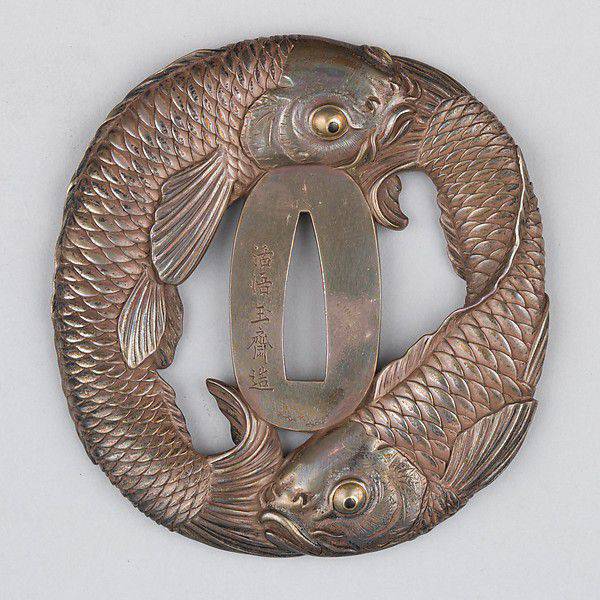
Among other, the so-called "soft metals", you can call such as: gin - silver; suaka or akagane - copper without any impurities; sintu - brass; yamagane - bronze; Shibuiti - a copper-gold alloy with one-fourth of silver (“si-bu-iti” just means “one-fourth”); color close to silver; rugin - an alloy of copper with silver (50% copper, 70% silver); Karakane - “Chinese metal”, an alloy of 20% tin and lead with copper (one of the variants of dark green bronze); santoku - another version of brass; sambo gin - copper alloy with 33% silver; Syrome and Savary - hard and whitish copper alloys, which darkened from time to time and therefore especially valued for this quality.
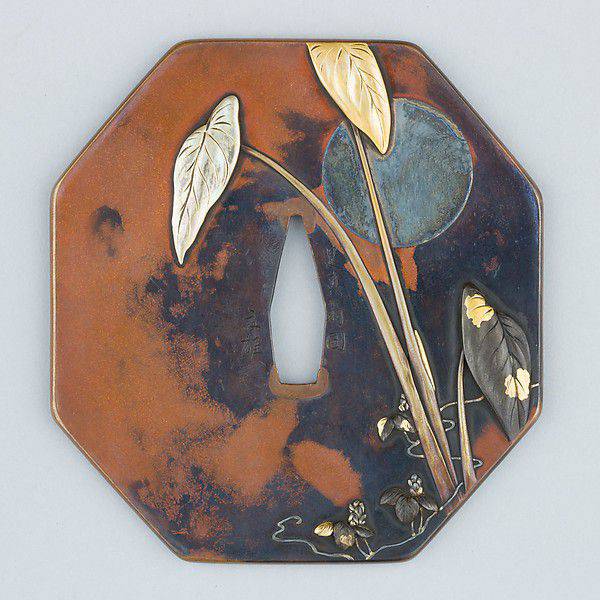
But neither precious stones, nor pearls, nor corals were practically used as an ornament for the cube, although nature could have given the Japanese an abundance of it all. After all, pearls, for example, were used in the design of Indian weapons, not only with handles or scabbards, but even the blades themselves. Accordingly, Turkish weapons were often decorated with corals without measure, which could almost completely cover the handle of the saber or scoop, and one could not even speak of such stones as turquoise and rubies. Everyone knows that one of the hallmarks of the Great Migration was the decoration of the handles and scabbards of the swords of the same Frankish kings and Scandinavian kings with gold and precious stones. Cloisonne enamel was also very popular, but all this truly barbaric pomp and sometimes overtly coarse, also characteristic of Turkish weapons, bypassed the work of Japanese gunsmiths.
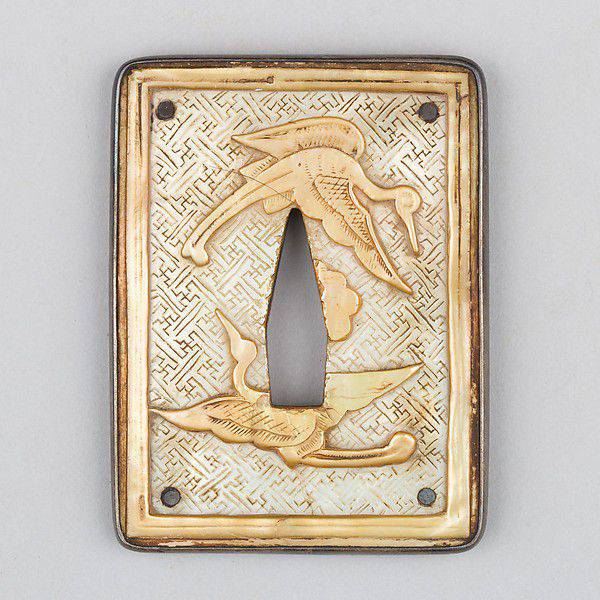
True, the distinctive feature of the time of the rule of the third Shogun Tokugawa Iemitsu (1623 - 1651) was the tsuba and other sword parts made of gold. They were popular with daimyo, the Japanese nobility, up to the 1830 edict of the year, aimed at combating luxury. However, it was bypassed, covering the same gold with ordinary black lacquer.
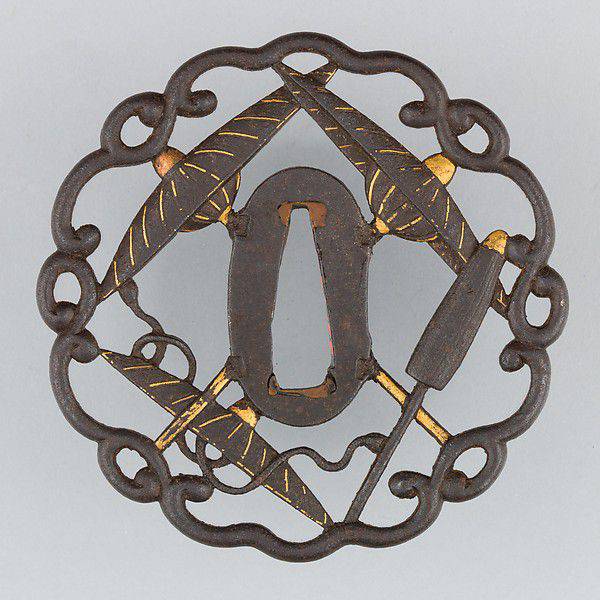
But it was not material that most often formed the basis for tsubako (tsubak smith) creativity, but literary works, the surrounding nature, scenes from city life. Nothing escaped their close attention - neither the dragonfly on a sheet of water lily, nor the strict profile of Mount Fuji. All this could be the basis of the plot for decorating a tsuba, which, like swords, each time were custom-made. As a result, the art of making tsuba turned into a national art tradition that survived the centuries, and the skill of making them became a craft that was passed on to the master by inheritance. In addition, the development of this art as it happens very often, helped by the phenomenon of fashion. It changed, the old tsubs were replaced by new ones, that is, without the work of a tsubak (tsubako) master, they did not sit!
The sizes of all the cubes were different, but still we can say that on average the diameter of the kuban was approximately 7,5-8 cm, cm-6,2-6,6 cm, and tanto 4,5-6, the most common diameter 6- 8 cm, thickness 4-5 mm and weight about 100 grams. In the center there was a hole for the shank of the sword, and next to it there were two more holes on the sides for accessories such as Kodzuk and Kogai **. Bushido decried the samurai for wearing rings, earrings and other decorations. But the samurai found a way out in the decoration of the scabbard and tsuba. So without a formal violation of their code, they could show others their refined taste and considerable wealth.
The main elements of the tsuba had the following names:
1. Ji (actually tsuba plane)
2. seppadai (platform corresponding to the profile of the scabbard and handle)
3. nakago-ana (wedge-shaped hole for the tail of the sword)
4. hitsu-ana (holes for kogatan knife and kogai studs)
5. Mimi (edging edges at tsuba)
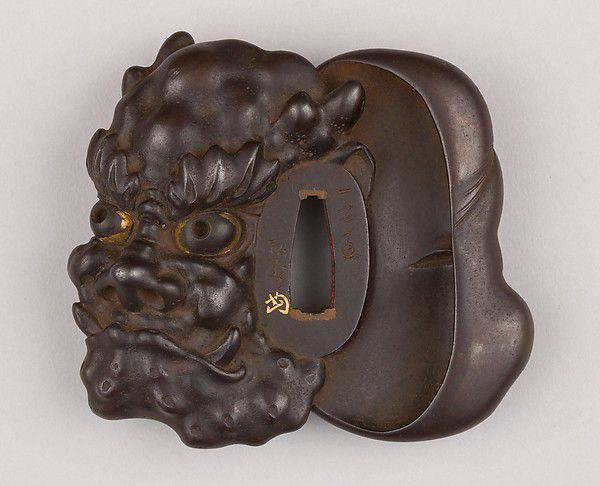
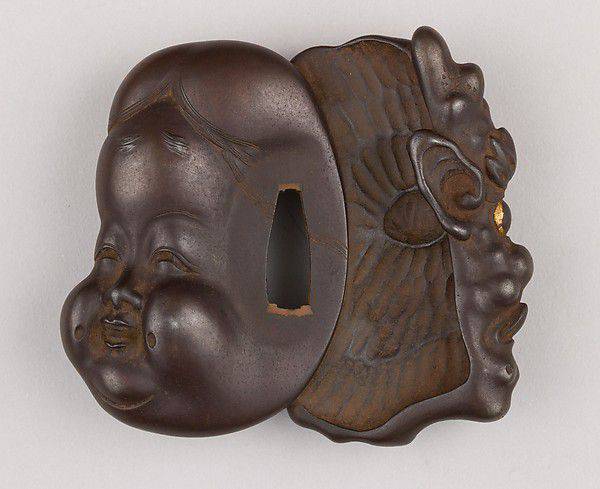
The most popular form of tsuba was the disk (maru-gata). But the fantasy of the Japanese masters was truly limitless, so you can see tsuba as strict geometric forms, and in the form of a leaf of a tree or even a hieroglyph. Tsuba were known in the form of an oval (nagamaru-gata), a quadrangle (kaku-gata), four-petal (aoi-gata), an octahedron, etc.
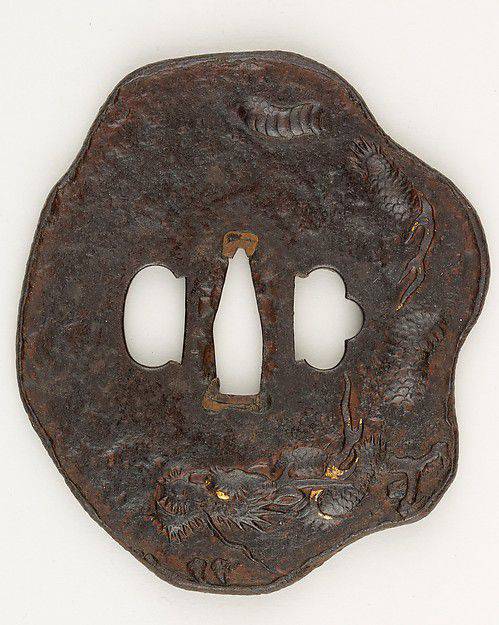
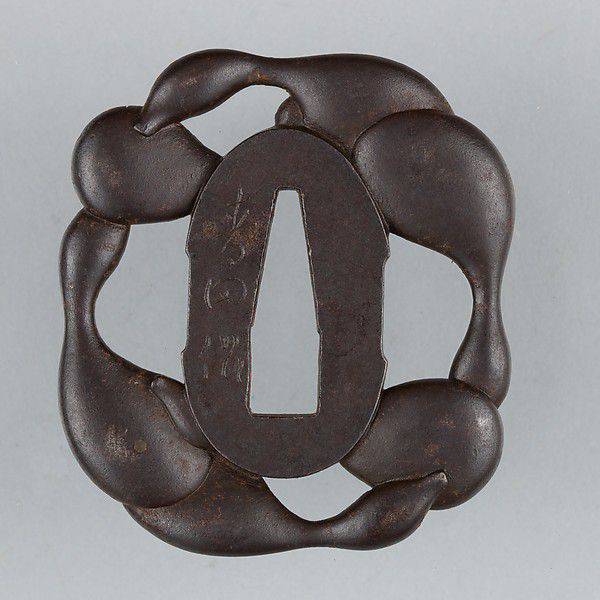
Moreover, the very form of a tsuba with an ornament or image cut on it could also be its main decorative element, although in the Edo period its surface (both external and internal) most often became the field of work for its master.
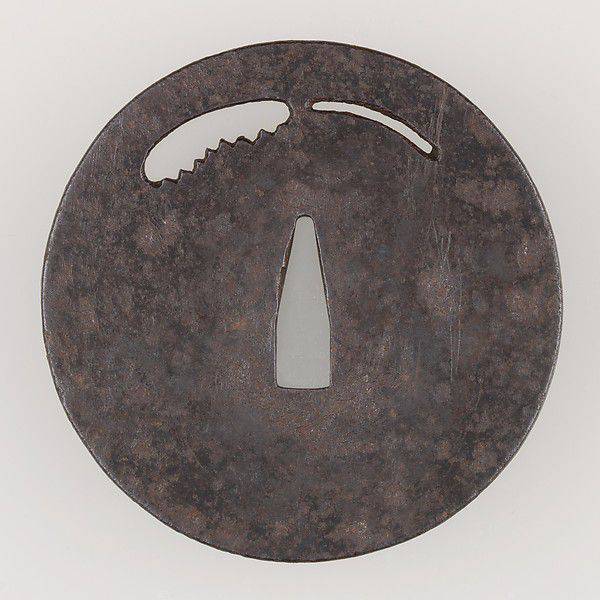
Both sides of the tsuba were usually decorated, but the front side was the main one. That's just here the Japanese had the opposite, as the face was considered the one that was turned to the handle! Why? Yes, because the swords were worn tucked into the belt, and only in this case, a stranger could see all her beauty! The side facing the blade could continue the plot of the front side, but it was possible to look at it only with the permission of the sword master, who, in order to show it, needed to get the sword from his belt or remove the blade from the scabbard.
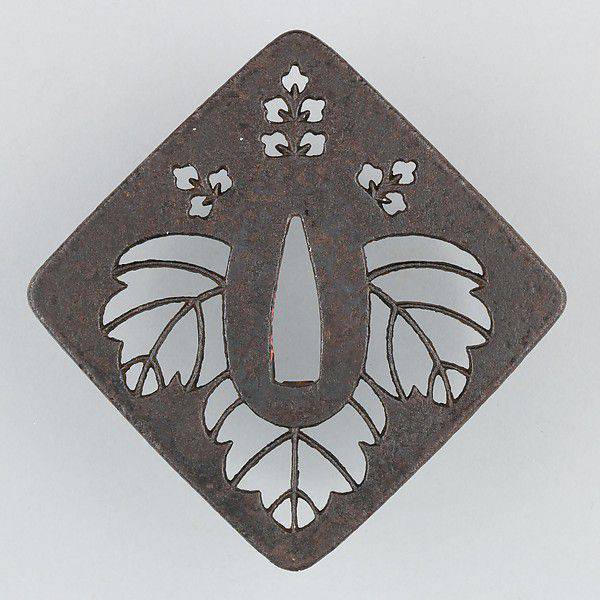
* We remind you that there are no declensions in the Japanese language, but in some cases they have to resort to and change Japanese words, following the norms of the Russian language.
** Kozuka is the handle of a knife of a ko-gatan, which was inserted into a special container in the sheath of a short wakizashi sword. Its length was usually 10 cm. This is an exquisite decoration of the sword, which often depicts chrysanthemums, flowering trees, animals, and even whole scenes. Kogai were located on the front side of the scabbard and represented a needle or a hairpin. Characteristic details of Kogai are the extension to the top and the graceful spoon at the end of the handle for ear cleaning. They were decorated in the same way as Kodzuka.
The author expresses his gratitude to the Antiques of Japan Company (http://antikvariat-japan.ru/) for the informational support and the photos provided.
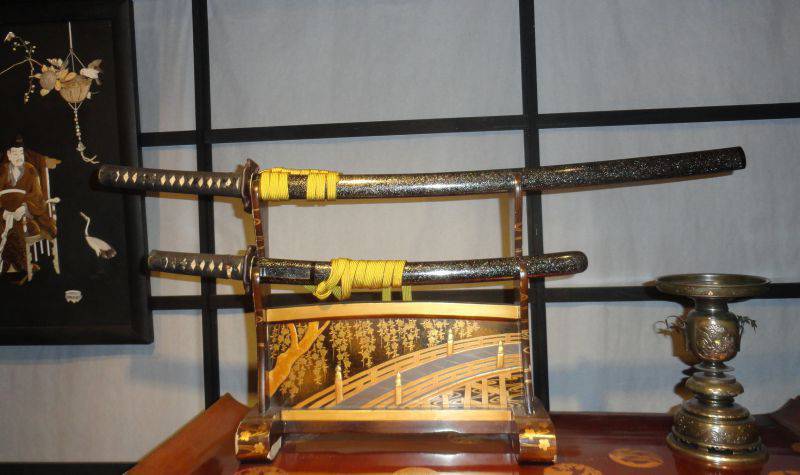
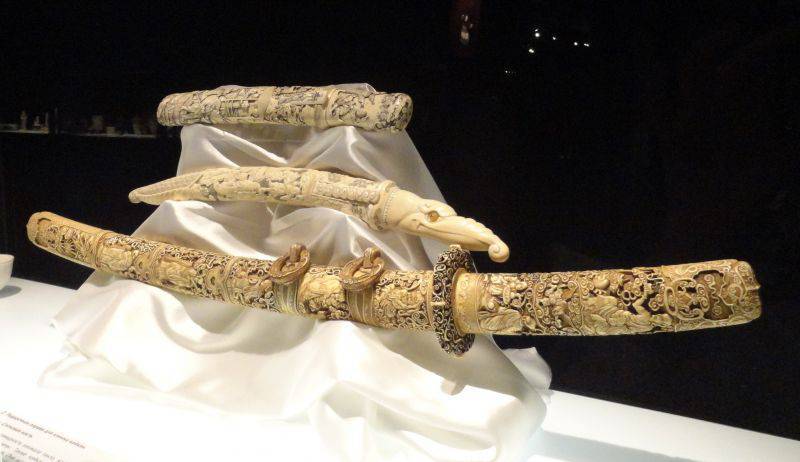
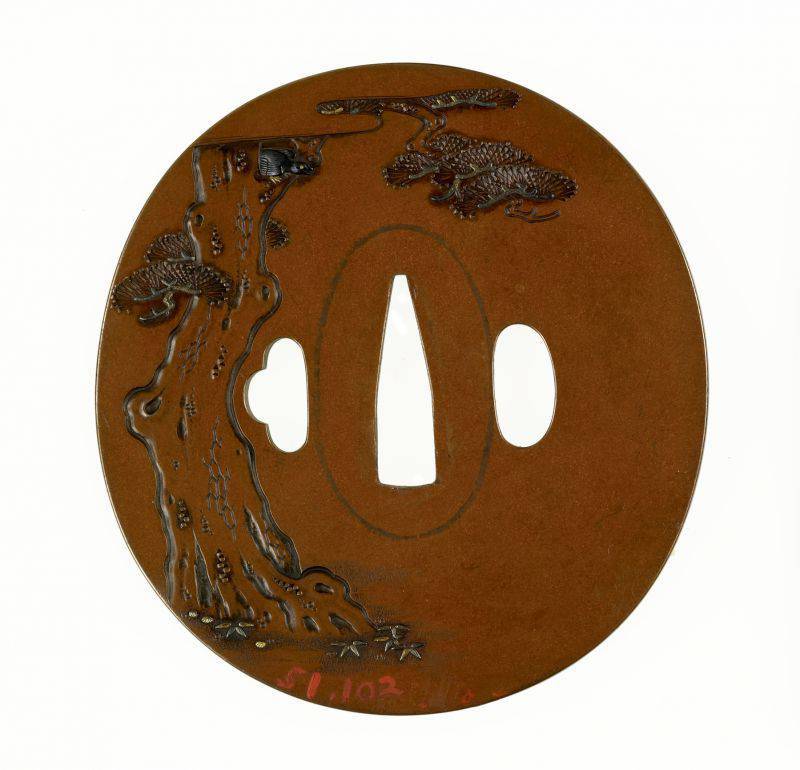
Information